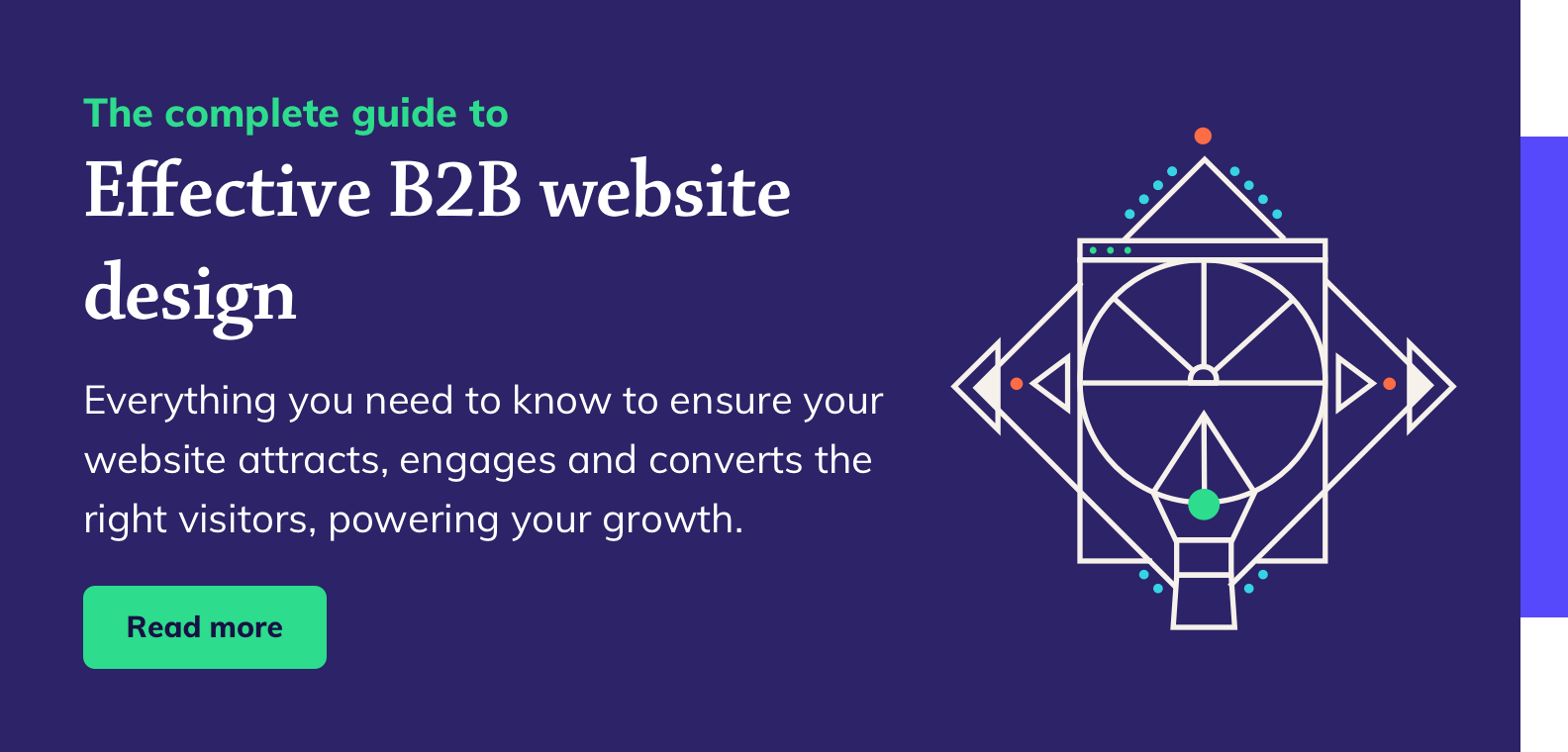Creating a B2B website that converts doesn't require as many pages as you might think. While it's tempting to create content for every possible audience and use case, the data shows that B2B buyers prefer a focused, straightforward website structure.
What are the core pages your B2B website needs?
The exact pages your website needs will depend on your audience, market, and offering. However, there are three essential pages that every B2B website should have:
- Homepage
- Product/service pages
- Bottom-of-funnel conversion page
Beyond these core pages, there are several other valuable additions like pricing pages and case studies – but they're not essential for every business.
Homepage
Your homepage is often the first interaction a prospect has with your business. While it needs to make a strong impression, it doesn't need to tell your entire story. Instead, focus on these key elements:
Clear value proposition
Your homepage should immediately communicate what you do and who you do it for. Your buyer wants to know this information within a glance. Make it easy for them to quickly see if you can help solve their problem.
Proof points
Include relevant social proof like customer logos, testimonials, or key statistics that build credibility with your target audience.
Differentiation
Show how you solve your buyers' problems in a unique way. Rather than listing why you're better than competitors, focus on addressing the specific challenges your ideal customers face. This helps buyers see the value in your solution without feeling pressured into a decision.
Strategic CTAs
Include clear calls-to-action that guide visitors to your most valuable conversion points, whether that's booking a demo or viewing your products.
Product/service pages: Meeting buyer needs
Product and service pages are your website's workhorses. B2B buyers are typically time-poor, information-rich, and task-oriented. They understand their sector and their challenges – they're looking for solutions.
These pages need to clearly outline:
- What you offer
- How it solves specific problems
- Key features and benefits
- Next steps for interested buyers
Don't bury this information beneath layers of navigation or industry-specific content. Make it easily accessible and comprehensive.
Bottom-of-funnel conversion page
Generic "Contact Us" pages are a relic of the past. They're often catch-all forms that try to serve multiple purposes - from customer support queries to sales enquiries - which means they're not optimised for any specific outcome.
Modern B2B websites need conversion pages that offer clear value to both parties. This could be:
- Book a demo
- Talk to sales
- Start a free trial
- Request a consultation
The key is being specific about what happens next. Will they get a personalised demo? A consultation with an expert? Make it clear and make it valuable.
Supporting pages: Valuable but not essential
While the core pages we've discussed are essential for any B2B website, there are several other page types that can add significant value when implemented effectively. These supporting pages aren't mandatory, but they can enhance your website's ability to convert visitors when they align with your offering and buyer preferences.
Pricing page
If your offering allows for transparent pricing, including this information can help qualify leads. However, it's not essential for complex B2B products or services where pricing varies significantly by customer.
Case studies
Success stories and case studies build credibility and help prospects envision working with you. While valuable, they're not essential if you have other effective ways to demonstrate proof.
About us
Your company story and credentials are powerful trust-building elements. While a dedicated page can work well, consider weaving these elements naturally throughout your core pages. This approach creates a stronger narrative and reinforces your expertise exactly where buyers are making decisions.
Pages to avoid
Creating a B2B website often involves balancing various stakeholder requests with what actually works for your buyers. While certain page types might seem logical from an internal perspective, research and user behaviour data tell a different story.
Research from Nielsen Norman Group reveals some interesting insights about website navigation preferences. Their studies show that audience-based navigation (organising content by industry or sector) often fails to engage users effectively. This aligns with what we've observed across numerous B2B websites – certain page types consistently underperform despite their apparent strategic value.
Industry/sector pages
While it might seem logical to create pages for each industry you serve, the data shows that B2B buyers rarely navigate to these pages. This often comes as a surprise to businesses who see their industry expertise as a key differentiator.
The reality is that your buyers are already experts in their industry. They don't need you to explain their sector to them. When they see navigation items for industry-specific content, they're often unclear about what information they'll find there. This uncertainty typically leads them to skip these pages entirely, opting instead for clear product or service-focused content.
What we see in analytics and heatmap data is that visitors overwhelmingly navigate to product and service pages, while industry-specific content receives minimal engagement. While there might be search opportunities around industry-specific terms that make these pages worth creating eventually, they shouldn't be a priority in your initial website structure.
Building an effective B2B website
The key to an effective B2B website isn't having more pages – it's having the right pages, structured appropriately for your buyers' needs. Focus first on creating compelling core pages that clearly communicate your value proposition and make it easy for buyers to take action.
Remember, your website should reflect how your buyers actually behave, not how you think they should behave. By focusing on essential pages and avoiding unnecessary complexity, you can create a more effective website that actually converts.




